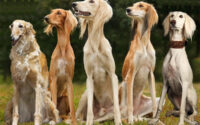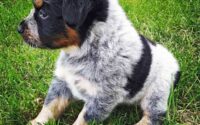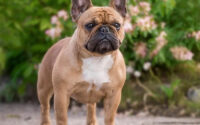Italian Daniffs: more about the breed
In the dynamic world of canine breeds, where the blending of lineages often leads to the emergence of new and captivating hybrids, the Italian Daniff stands as a testament to this evolutionary craftsmanship. Combining the elegance of the Italian Mastiff with the gentle giant essence of the Great Dane, the Italian Daniff is a breed that captures the best of both worlds. This article aims to unravel the tapestry of traits characterizing this impressive hybrid, offering insights into its origins, temperament, health considerations, training strategies, and tips on locating ethical breeders. Join us as we delve into the fascinating realm of the Italian Daniff.
Unveiling the Italian Daniff Breed
Table of Contents

The Italian Daniff is not your everyday breed; it’s a magnificent hybrid that exudes strength, loyalty, and a surprising dash of grace. This gentle giant is the product of crossing an Italian Mastiff, known for its protective instincts and commanding presence, with a Great Dane, celebrated for its towering stature and friendly demeanor. The resulting Italian Daniff is a colossal dog that can stand as high as 34 inches and can weigh anywhere between 115 to 130 pounds. Their appearance is a harmonious blend of their parent breeds, with a muscular build, expressive eyes, and a coat that comes in a variety of colors, from fawn and brindle to black and blue.
A Deep Dive into Daniff Origins

The Italian Daniff’s lineage can be traced back to an intentional crossbreeding effort to combine the best traits of two distinct purebreds. The Italian Mastiff, also known as the Cane Corso, has ancient roots in Roman military history, where it served as a versatile war dog and property guardian. The Great Dane, on the other hand, has a history that includes hunting and estate guarding, with a nobility that earned it the nickname “Apollo of Dogs.” This mixed breeding aims to create a dog with the Cane Corso’s protective instincts and the Great Dane’s friendly and patient nature.
Italian Daniff: Temperament Traits

The temperament of an Italian Daniff is a rich tapestry woven from the threads of its parent breeds. Owners of these dogs often report a number of admirable traits:
- Loyalty: Daniffs are known for their unwavering loyalty to their family.
- Protective: Inherited from the Cane Corso, they are natural guardians.
- Gentle: Despite their size, they are known for being gentle and loving.
- Playful: They often retain a playful streak well into adulthood.
- Intelligent: Quick learners, Daniffs can be highly trainable.
- Sociable: When properly socialized, Daniffs can get along well with people and other pets.
Health Considerations for Daniffs

As with any breed, Italian Daniffs come with their own set of health considerations that prospective owners should be aware of:
- Hip Dysplasia: A common issue in large breeds that can lead to arthritis.
- Bloat: This breed is susceptible to gastric torsion, which can be life-threatening.
- Heart Conditions: It’s important to monitor for signs of heart disease.
- Joint Issues: Their large size can put a strain on joints over time.
- Lifespan: Daniffs typically have a life expectancy between 8 to 12 years.
- Preventive Care: Regular veterinary check-ups and a well-managed diet are crucial for longevity.
Training Tips for Italian Daniffs

Training an Italian Daniff can be a rewarding experience given their intelligence and eagerness to please. Here are some effective strategies:
- Start Early: Begin training and socialization as soon as you bring your Daniff home.
- Positive Reinforcement: Use treats and praise to encourage good behavior.
- Consistency: Establish rules and stick to them; inconsistency can confuse your Daniff.
- Exercise: Regular physical activity helps to prevent boredom and related behavioral issues.
- Patience: Training a large dog takes time, so be patient and persistent.
- Professional Help: Consider obedience classes or hiring a professional trainer for best results.
Finding Reputable Daniff Breeders

Locating a reputable Daniff breeder is crucial for ensuring you get a healthy and well-socialized puppy. Here’s what to look for:
- Health Testing: Breeders should provide proof of health clearances for both parent breeds.
- Openness: Good breeders will welcome your questions and allow you to visit and meet the puppies’ parents.
- Knowledgeable: They should be well-informed about the breed and able to offer advice on care and training.
- Ethical Practices: Look for breeders who prioritize the well-being of their dogs over profit.
- Support: A reputable breeder will offer ongoing support and advice as your puppy grows.
- Recommendations: Seek out reviews and ask for recommendations from other Daniff owners or breed clubs.
Comparison Table: Italian Mastiff vs. Great Dane vs. Italian Daniff
| Trait | Italian Mastiff | Great Dane | Italian Daniff |
|---|---|---|---|
| Size | Large | Giant | Giant |
| Temperament | Protective, Loyal | Friendly, Gentle | Protective, Gentle |
| Lifespan | 10-12 years | 7-10 years | 8-12 years |
| Health Concerns | Hip dysplasia, Bloat | Heart issues, Hip dysplasia | Hip dysplasia, Bloat, Joint issues |
| Exercise Needs | Moderate | High | Moderate to High |
| Training | Requires firm, consistent training | Responds well to positive reinforcement | Beneficial to have a mix of both approaches |
The Italian Daniff is a breed that commands respect, not only for its impressive size and strength but for its warm-hearted nature and keen intelligence. This hybrid is suited for those who appreciate the protective qualities of the Cane Corso and the friendly giant aspect of the Great Dane. While they come with certain health and training considerations, the right approach and commitment can lead to a rewarding companionship. When searching for an Italian Daniff, it is imperative to seek a reputable breeder to ensure the well-being of your future furry family member. The Italian Daniff may be a blend of two breeds, but it stands out as a unique and magnificent companion in its own right.



